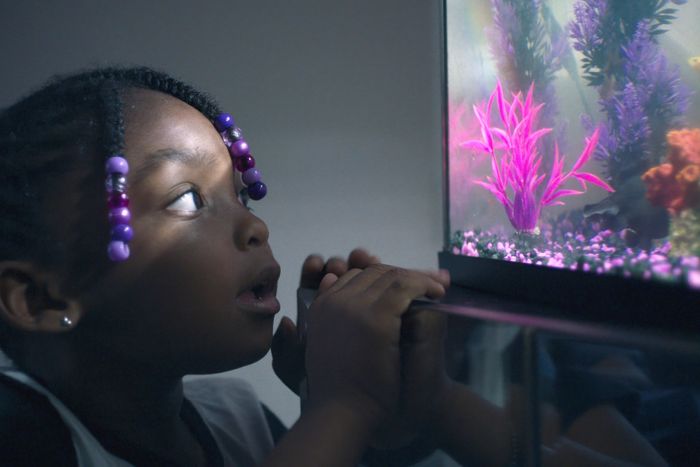
The new Netflix documentary Daughters, directed by Angela Patton and Natalie Rae, offers a perfect example of how a subject can be enhanced by sensitive, artful filmmaking. It follows the organization of a father-daughter dance between inmates at a Washington, D.C., prison and their girls, who range in age from 5 to their mid-teens. The initiative was started in Richmond, Virginia, by co-director Patton herself back in 2012 and has expanded since. It seeks to provide a rare opportunity for girls and their incarcerated fathers, many of whom haven’t seen each other in years, to interact in person. The directors have said that one of their goals in making the film is to draw attention to the fact that many prisons have done away with “touch visits” between inmates and families, so that they can only meet via video calls or over the phone. All of these are worthy ideas, and they’d probably be enough to make Daughters an admirable, ennobling picture. But the filmmaking, the way the directors have shot and assembled their material, takes it to a different level.
Patton and Rae spend much of Daughters’s run time following a handful of the girls and their fathers as they prepare for the dance. The eligible inmates must first complete a ten-week program in which they meet with Chad Morris, a life coach who helps prepare them for what will surely be a wrenching, unreal experience. “It’s gonna be an emotional roller coaster,” he warns them. “’Cause you’re gonna be on a high when that dance happens, and as that clock ticks toward the ending time, you’ll go through your own range of emotions.” The girls, meanwhile, confess to the camera their complicated feelings about their dads — be they feelings of abandonment, deprivation, or hope. Five-year-old Aubrey, who boasts that she’s the smartest kid in her class, has festooned the walls of her house with certificates she’s won at school, because of a promise she made to her dad, Keith, once. She spends her days repeating her multiplication tables — adorable, yes, but also a way to try to make sense of the cold math of prison sentences and parole and when her dad might come home. Meanwhile, 11-year-old Ja’Ana, whose father, Frank, wasn’t even around for the first several years of her life, doesn’t quite know what to think of him. They haven’t talked in years, and later scenes between the two, the dad as quiet and awkward as his unsure daughter, are among the most heartbreaking in the movie.
Daughters could have easily been a standard-process doc, about the logistics and bureaucracy involved in organizing something like this, and it might have been interesting as such. But Patton and Rae choose instead to focus on the indelible faces at the heart of their tale, as the girls and the dads anxiously await and prepare for their big day. Pointedly, there’s no discussion of what these men were convicted of, and the documentary doesn’t show much of their daily lives as prisoners. We’ve seen all that in countless pictures already. These girls know them as fathers, and the filmmakers wisely adopt that perspective, too. The accrual of human detail pays off masterfully when we get to the dance itself — especially when the girls see their fathers for the first time. Some don’t even know if they’ll recognize each other. (Spoiler alert: They do.) The details shown along the way are brief but moving: The fathers practicing how to put on a tie; Patton herself informing them that her own 80-year-old pops is voluntarily shining their shoes before the dance. After the event, we see the piles of shoes, ties, and belts lying on the floor, followed by a quick glimpse of the fathers filing out, back in their orange jumpsuits.
It’s only in the film’s final act that we discover that Daughters has been a longitudinal documentary all along — that this dance happened in 2019, and that these girls and their fathers have done more years of living since then. Relationships and attitudes have changed. Sentences have changed. Some fathers have been released and are trying to resurrect their lives. Others have drifted further into the prison system, their ability to interact with their families severely limited. Arguably, these final scenes are the most devastating — not because of any grand emotional revelations or narrative developments but because they underscore the basic truth the entire film has been building up to: Time is the most precious thing we have.
More Movie Reviews
- The Thriller Drop Is a Perfect Addition to the Bad-First-Date Canon
- The Accountant 2 Can Not Be Taken Seriously
- Another Simple Favor Is So Fun, Until It Gets So Dumb


